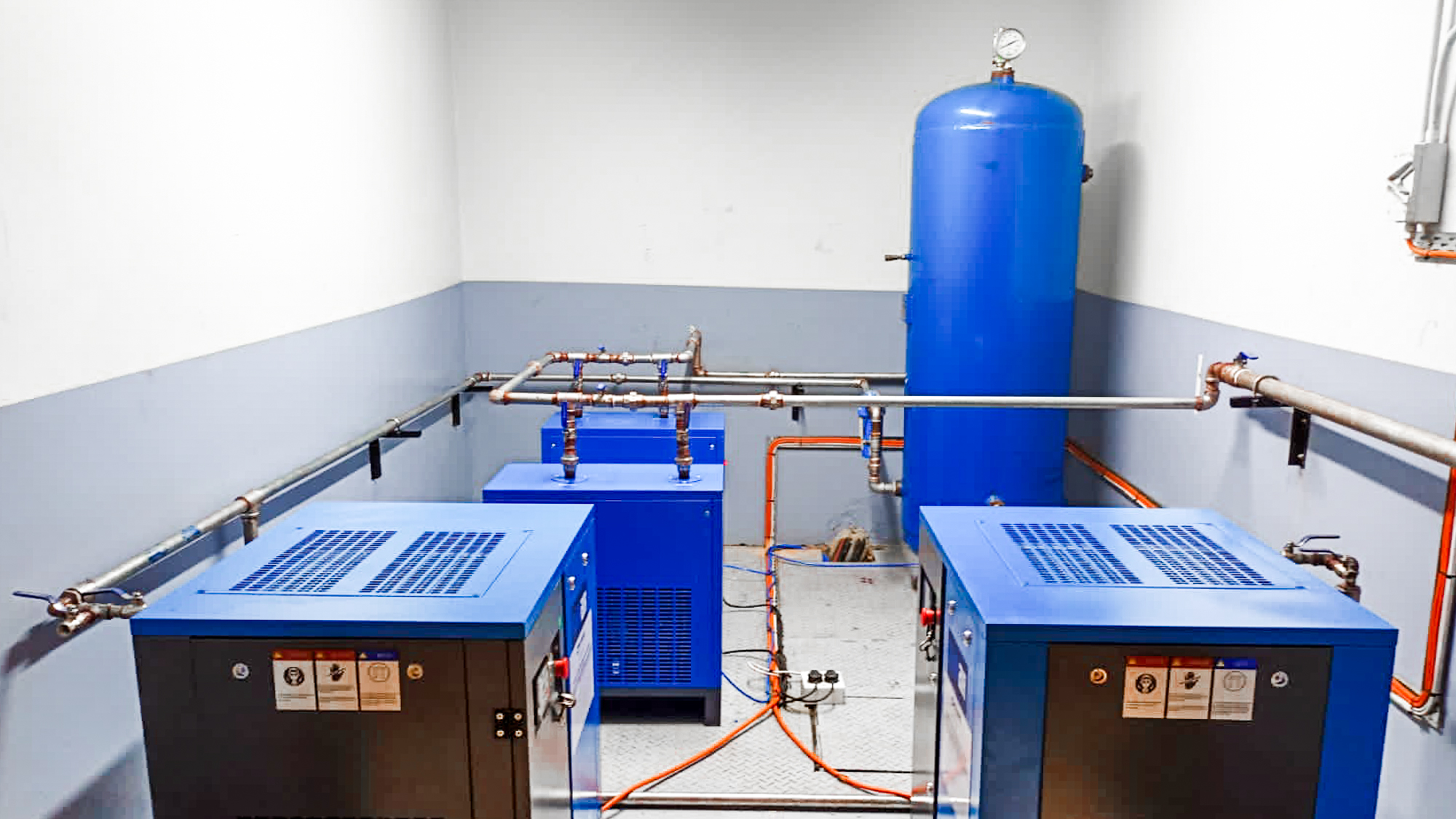Business
Guarding Your Business: Conducting a Comprehensive Physical Security Risk Assessment

In today’s dynamic and often unpredictable business environment, securing physical assets and ensuring the safety of personnel is more crucial than ever. A comprehensive physical security risk assessment is essential for identifying vulnerabilities and developing strategies to mitigate risks. This article explores the vital steps involved in conducting an effective security risk assessment, offering organizations insights on how to protect their operations comprehensively.
Understanding Physical Security Risk Assessment
A physical security risk assessment is a systematic process that helps organizations understand the potential threats to their physical assets, including buildings, equipment, and personnel. The assessment involves evaluating existing security measures, identifying potential vulnerabilities, and recommending enhancements to strengthen overall security. By forbel alarms, businesses can ensure that their security protocols are robust, responsive, and appropriate for the specific challenges they face.
Key Components of Risk Assessment
The process of conducting a physical security risk assessment includes several critical components:
- Identifying and Valuing Assets: The first step involves identifying what needs protection. This could range from physical assets like technology and machinery to soft assets like data and intellectual property.
- Threat Identification: Understanding the types of threats your business may face, from theft and vandalism to natural disasters and terrorism, is crucial for developing an effective security strategy.
- Vulnerability Assessment: This involves examining how exposed your assets are to potential threats. It includes reviewing current security measures like surveillance systems, access controls, and barriers to determine their effectiveness and any weaknesses.
- Risk Evaluation: This step assesses the potential impact of identified threats materializing and how likely they are to occur, allowing businesses to prioritize risks based on their severity and likelihood.
- Mitigation Strategies: Based on the risk evaluation, businesses can then develop tailored strategies to mitigate identified risks, often involving a combination of physical security enhancements, policy changes, and staff training.
Implementing Enhanced Security Measures
Once the assessment is complete, implementing the recommended security measures is critical. This may include upgrading physical barriers, enhancing surveillance systems, improving access controls, and revising emergency response protocols. Training staff on security best practices and the specific protocols of the organization is also crucial, as human elements play a significant role in security effectiveness.
For a deeper dive into the methodologies and benefits of this process, businesses can refer to Physical Security Risk Assessment, a detailed guide that walks through the nuances of evaluating and enhancing security measures tailored to an organization’s specific needs.
Conclusion
Conducting a comprehensive physical security risk assessment is not just about reacting to incidents but proactively managing and mitigating potential risks. With the guidance of experienced security professionals and a clear understanding of the principles outlined, businesses can safeguard their assets more effectively and create a safer working environment for everyone involved. By taking a strategic and informed approach to physical security, organizations can not only protect their current assets but also ensure the resilience and sustainability of their operations in the long run.
Business
4 Benefits of Video Chat: A Game-Changer for Startup Culture

Communication tools play a critical role in shaping the internal culture and operational efficiency.
Among these tools, video chat has emerged as a game-changer, influencing not only how team members interact but also how the very ethos of startup culture evolves.
This article explores the transformative impact of video chat on startups, highlighting its benefits, challenges, and best practices.
The Rise of Video Chat in Startups
The adoption of video chat technologies has been accelerated by several factors, notably the increase in remote work and the global nature of modern business ecosystems.
For startups, which often operate on lean resources and need to scale quickly, video chat offers a cost-effective solution that transcends geographical boundaries.
Some tools have become staples in the startup environment, facilitating everything from daily check-ins to pitch sessions with potential investors.
4 Benefits of Video Chat in Startup Culture
Let’s look some of the benefits that video chat provides:
Better Collaboration and Team Cohesion
Video chat enables real-time communication and collaboration across different time zones and locations. This immediacy helps maintain the momentum of projects and allows for quicker decision-making processes.
Moreover, the visual aspect of video calls helps in building and maintaining interpersonal relationships among team members, implementing a sense of unity and team cohesion that is crucial for startups.
Scalability and Flexibility
As startups grow, the need for scalable communication tools becomes critical.
Video chat platforms can accommodate increasing numbers of users and integrate with other tools, providing a flexible environment that grows with the company.
This scalability ensures that startups can maintain effective communication without constant reinvestment in new technologies.
Cost-Effectiveness
Maintaining a physical office space can be a significant expense for startups. Video chat reduces the need for physical presence, allowing startups to adopt a virtual or hybrid office model.
This not only cuts down on real estate costs but also broadens the talent pool to include global candidates, potentially decreasing overall hiring costs.
Challenges and Considerations
Despite its benefits, integrating video chat into startup culture comes with challenges. Privacy and security concerns are paramount, especially when handling sensitive information.
Startups must ensure that their chosen platforms comply with industry standards and regulations to protect both company and client data.
Another issue is the potential for “Zoom fatigue,” where the intensity and frequency of video meetings can lead to burnout among team members. Startups need to balance the convenience of video chats with the need for downtime and asynchronous work periods.
Best Practices for Integrating Video Chat in Startups
To maximize the benefits while minimizing potential drawbacks, startups should consider the following best practices:
Establish Clear Communication Protocols
Define when and how a video chat should be used, and when other forms of communication might be more appropriate. Having guidelines helps prevent miscommunication and ensures that video chats are used effectively without overwhelming the team.
Invest in Quality Hardware and Software
Good quality audio and video equipment can significantly increase the effectiveness of video communication.
Investing in good microphones, cameras, and a reliable internet connection can reduce technical glitches that could impede smooth communication.
Prioritize Security
Choose video chat platforms with strong security features and ensure that all communications are encrypted.
Regularly update software to protect against vulnerabilities and conduct training sessions to make team members aware of best security practices.
Monitor and Adapt Usage
Regularly assess how video chat is affecting work dynamics and make adjustments as needed.
If team members report high levels of fatigue, consider reducing the frequency of mandatory video calls or alternating them with audio-only meetings.
Conclusion
Video chat is not just a tool but a catalyst that can significantly shape the culture and operational efficacy of a startup.
By fostering better communication, supporting scalability, and improving team cohesion, video chat platforms can propel startups towards greater success.
However, to truly benefit from video chat, startups must approach its integration thoughtfully, balancing the benefits of real-time communication with the well-being of their team members.
With the right strategies, startups can harness the power of video chat to build a resilient, adaptive, and inclusive culture.
Business
Revolutionizing Medical Insurance: The Role of Chatbots

Technology plays an important role in shaping how services are delivered. Among these technological advancements, chatbots stand out as a particularly influential tool.
These AI-driven assistants are transforming the industry by improving customer service, streamlining claims processing, and providing critical data-driven insights. This article explores how chatbots are being integrated into group medical insurance and the myriad benefits they offer to both insurers and insured groups.
Introduction to Chatbots in Group Medical Insurance
Chatbots are artificial intelligence (AI) systems that conduct conversations via textual or auditory methods. In the context of group medical insurance, chatbots are programmed to understand and respond to a variety of inquiries related to medical coverage, policy details, claims submission, and more.
They serve as the first line of interaction for employees seeking information about their health benefits, making them a crucial component of modern customer service strategies in insurance.
Key Benefits of Implementing Chatbots
You’ve heard about chatbots before, so let’s look at the main benefits of implementing them.
Better Customer Service
The immediate benefit of chatbots in group medical insurance is the improvement of customer service. These AI systems are available 24/7, providing real-time responses to insured members’ questions.
This constant availability is particularly beneficial for organizations with a diverse workforce, including remote or international employees who may need assistance outside of regular business hours.
Streamlining Claims Processing
Chatbots significantly improve the efficiency of claims processing. They can guide employees through the claims submission process, help gather necessary documentation, and answer any questions that arise along the way. By handling routine inquiries and initial steps in the claims process, chatbots free up human agents to focus on more complex cases, thus speeding up overall processing times.
Cost Reduction
Deploying chatbots can lead to substantial cost savings for insurance companies and insured organizations. By automating routine tasks and customer interactions, chatbots reduce the workload on human customer service agents, allowing insurance providers to allocate resources more efficiently. This automation also minimizes the risk of human error, potentially reducing the costs associated with claims disputes and corrections.
Personalized Assistance
AI technology enables chatbots to deliver personalized assistance to users. By analyzing past interactions and user data, chatbots can tailor their responses to better meet the specific needs of individual members. This level of personalization not only improves the user experience but also helps employees make better-informed decisions about their health insurance options.
Proactive Health Management
Beyond handling inquiries and claims, chatbots in group medical insurance can play a proactive role in health management. They can send reminders for preventive health screenings, provide tips for healthy living, and inform members about wellness programs offered by their employer. This proactive approach can help improve overall health outcomes and reduce healthcare costs for both employees and employers.
Challenges and Considerations
While chatbots offer numerous advantages, there are challenges to consider. Privacy and security are paramount, as chatbots handle sensitive personal health information. Ensuring compliance with healthcare regulations is essential.
Additionally, the effectiveness of a chatbot depends on its programming and the quality of its AI algorithms. Ongoing training and updates are necessary to maintain accuracy and relevance of information.
Conclusion
Chatbots are redefining everything nowadays.
Through their ability to improve customer service, streamline processes, reduce costs, and provide personalized support, chatbots are becoming an indispensable tool for insurance providers.
As technology continues to advance, the capabilities of chatbots will expand, further transforming the industry and improving the experiences of insured groups.
By embracing these AI-powered tools, insurers can deliver more effective, efficient, and personalized health insurance services.
Business
Calculating Compressed Air Needs: Tools for Precise System Design

Designing an efficient compressed air system requires precise calculations to ensure that every component is tailored to the specific needs of an operation. This necessity highlights the importance of tools like the CFM Calculator and Pipe Velocity Calculator for Compressed Air provided by Fluid-Aire Dynamics. These tools play a crucial role in optimizing system design, allowing for accurate airflow measurements and efficient system configurations, which can significantly reduce energy costs and improve operational efficacy.
Importance of Accurate Airflow Calculations in Compressed Air Systems
Precise airflow calculations are essential in designing compressed air systems to ensure they operate efficiently without wasting energy. An overestimated need can lead to oversized equipment and higher operating costs, while an underestimated system may not meet the operational demands, leading to increased wear and potential failure.
Key Benefits of Accurate Calculations
- Energy Efficiency: Properly sized systems use less energy, as they are not overworking to meet compressed air demands.
- Cost Savings: Systems designed with precision require less frequent repairs and maintenance due to reduced strain on the system’s components.
- Optimal Performance: Accurate calculations ensure that systems provide enough compressed air for all tools and processes without faltering.
Fluid-Aire Dynamics’ CFM Calculator
The CFM (Cubic Feet per Minute) Calculator provided by Fluid-Aire Dynamics is an essential tool for businesses looking to design or update their compressed air systems. This calculator helps determine the correct amount of air flow needed based on the combined air consumption of all the pneumatic tools and equipment in operation.
Using the CFM Calculator
- Input Requirements: Users input various parameters, such as the number of tools in use, their individual CFM requirements, and total operational hours.
- Output Information: The calculator processes this information to output the total CFM required, helping users choose the right compressor size and configuration.
Enhancing Design with the Pipe Velocity Calculator for Compressed Air
In addition to calculating air needs, ensuring that compressed air moves through the system at the correct speed is crucial to maintain efficiency and prevent issues such as excessive pressure drop and condensation. The Pipe Velocity Calculator for Compressed Air from Fluid-Aire Dynamics assists in determining the optimal pipe size needed to maintain appropriate air velocity within the system.
Benefits of the Pipe Velocity Calculator
- Prevents Pressure Loss: Adequate pipe sizing calculated from the tool helps prevent significant pressure losses across the system.
- Avoids Condensation Issues: Maintaining the right velocity helps reduce the risk of moisture buildup in the air lines, which can lead to water in the system and potentially damage equipment.
Integrating Tools for Comprehensive System Design
By integrating the use of both the CFM Calculator and the Pipe Velocity Calculator, businesses can ensure that their compressed air systems are not only sized accurately but also laid out efficiently. This comprehensive approach to system design facilitates optimal performance and energy efficiency.
- System Layout Optimization: Proper calculations help in designing a system layout that minimizes turns and reduces the length of air travel, further enhancing efficiency.
- Improved Longevity and Reliability: Systems designed with precise calculations are likely to have a longer service life and higher reliability due to reduced operational strain.
The utilization of precise calculation tools provided by Fluid-Aire Dynamics underscores the importance of tailored system design in compressed air systems. By ensuring that all components are correctly sized and efficiently arranged, businesses can achieve significant operational improvements, reduce costs, and increase the reliability of their pneumatic tools and processes. These tools are indispensable for any operation looking to optimize their compressed air system for maximum performance and efficiency.
-

 Fashion6 days ago
Fashion6 days agoThe Best Tie Store for Fashion-Forward Accessories
-

 Fitness5 days ago
Fitness5 days agoRevolutionizing Beauty: Explore Advanced Aesthetic Treatments with TruBody and TruSculpt iD in Miami
-

 News5 days ago
News5 days agoDiscover the Best Barbershops in Miami Lakes and Miami Springs: A Guide to Top Services, Community Engagement, and Choosing the Right Barber
-
News5 days ago
Revolutionizing Wellness: Exploring Performance Drip and Skinny Drips for Cutting-Edge Weight Loss Solutions
-

 Law1 week ago
Law1 week agoHow to Recover Physically and Mentally From an Accident
-

 News5 days ago
News5 days agoQualifying For A Zero Down Home Loan
-

 Health5 days ago
Health5 days agoTransform Your Look with Hair Restoration Services You Can Trust at facebodyclinicth.com
-

 Food3 days ago
Food3 days agoBerry Summer Pudding: A Refreshing Delight for Sunny Days








